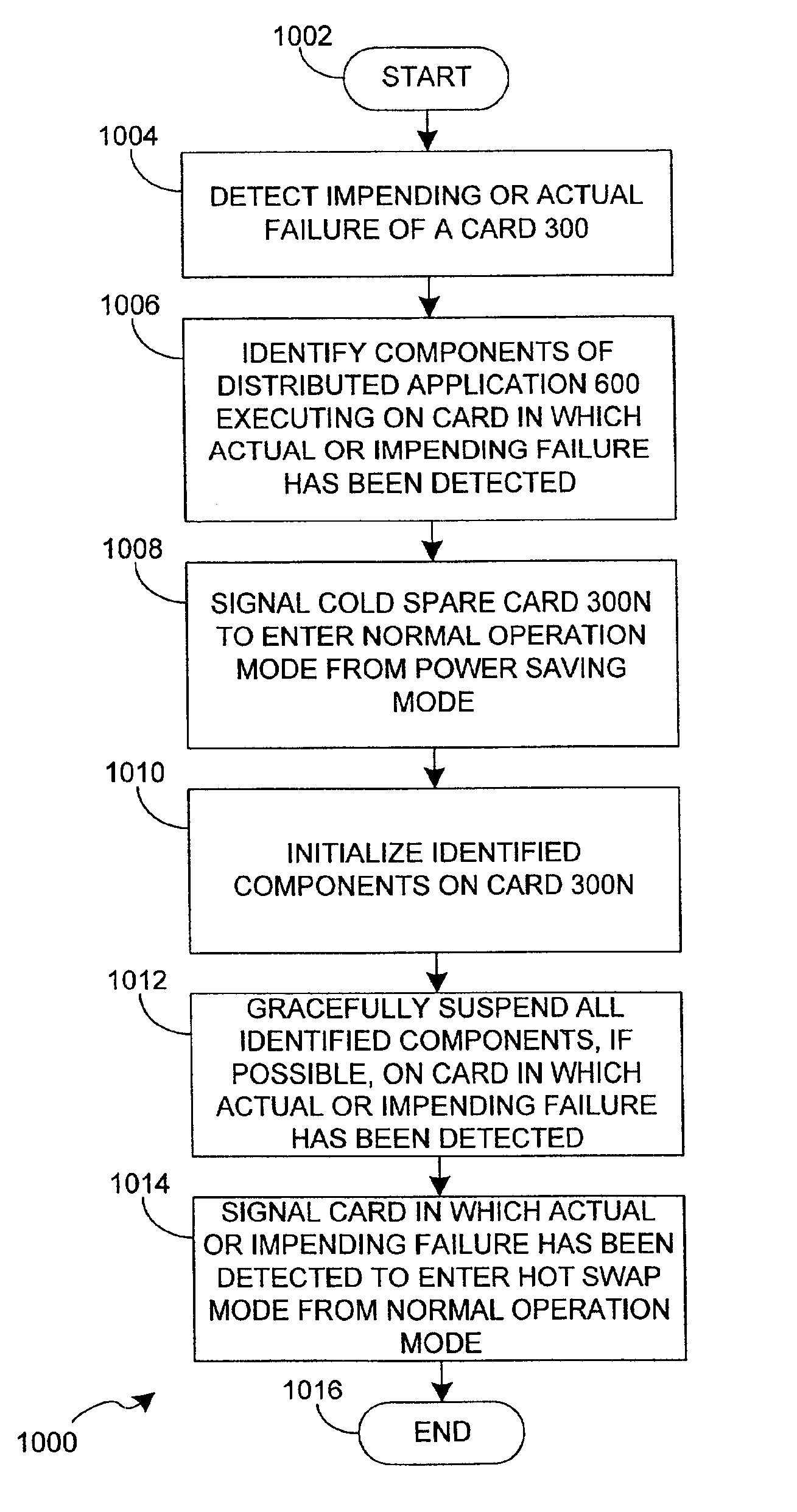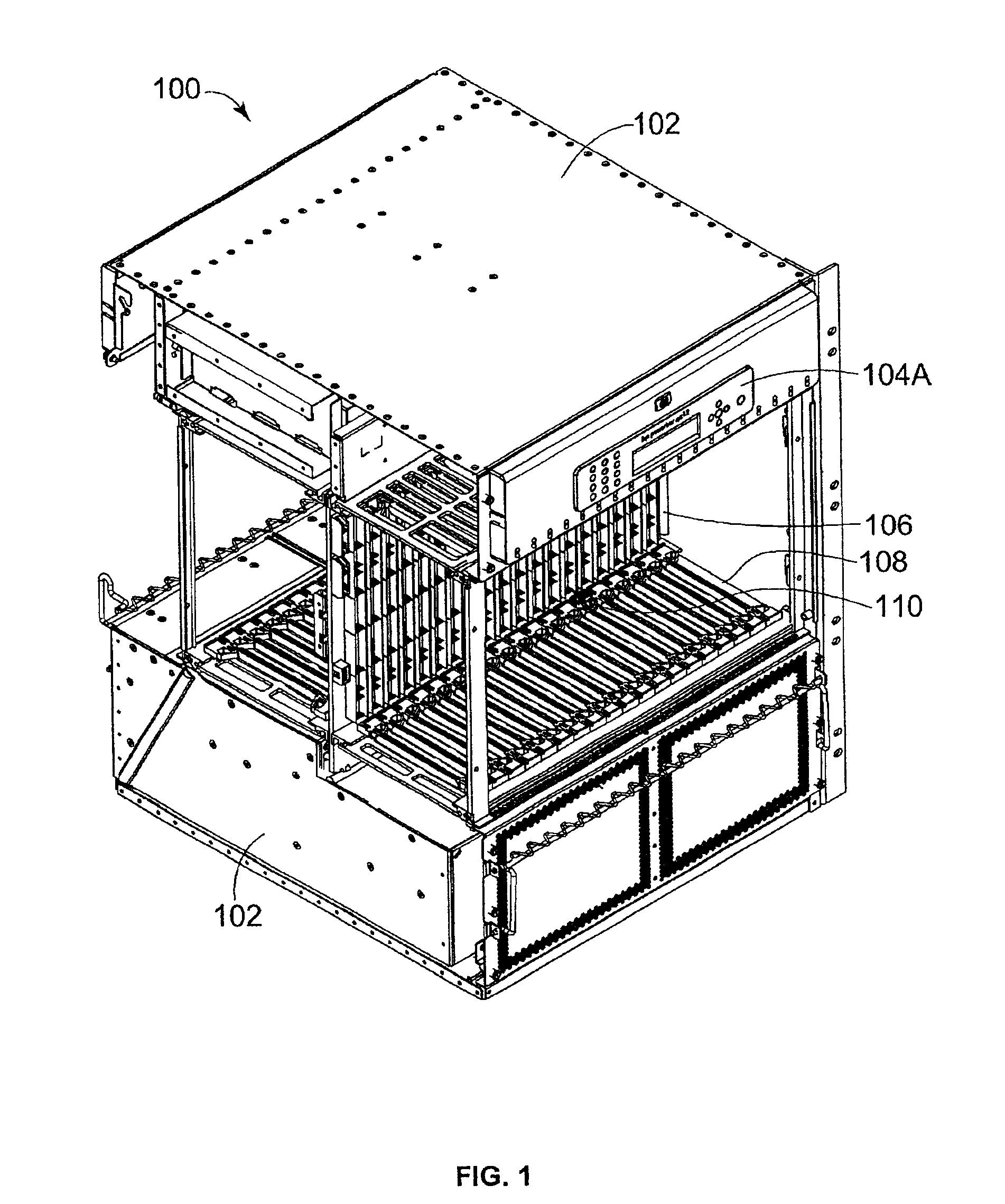System and method for providing minimal power-consuming redundant computing hardware for distributed services
a computing hardware and distributed service technology, applied in fault response, high-level techniques, instruments, etc., can solve the problems of air conditioning units that may fail, power supplies that cannot meet the full power needs of distributed applications, etc., to reduce costs, improve reliability, and reduce power consumption.
- Summary
- Abstract
- Description
- Claims
- Application Information
AI Technical Summary
Benefits of technology
Problems solved by technology
Method used
Image
Examples
Embodiment Construction
[0028]The present invention provides a system and method for intelligent control of power consumption of distributed services and components, such as those used to implement a distributed application. The present invention is best implemented on a computer system that provides independent computing elements capable of being powered down or entering a power saving mode, thereby allowing individual services to be suspended. One such computer system was disclosed in U.S. patent application Ser. No. 09 / 924,024, which was filed on Aug. 7, 2001, has the same assignee as the present application, names exactly the same inventors as the present application, is entitled “System and Method for Power Management in a Server System”, and is hereby incorporated by reference. Before considering the present invention in detail below, first consider the system disclosed in U.S. patent application Ser. No. 09 / 924,024.
[0029]FIG. 1 is a front perspective view illustrating a server system 100 capable of ...
PUM
 Login to View More
Login to View More Abstract
Description
Claims
Application Information
 Login to View More
Login to View More - R&D
- Intellectual Property
- Life Sciences
- Materials
- Tech Scout
- Unparalleled Data Quality
- Higher Quality Content
- 60% Fewer Hallucinations
Browse by: Latest US Patents, China's latest patents, Technical Efficacy Thesaurus, Application Domain, Technology Topic, Popular Technical Reports.
© 2025 PatSnap. All rights reserved.Legal|Privacy policy|Modern Slavery Act Transparency Statement|Sitemap|About US| Contact US: help@patsnap.com



